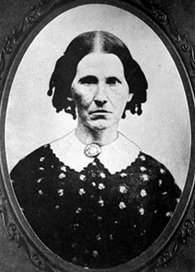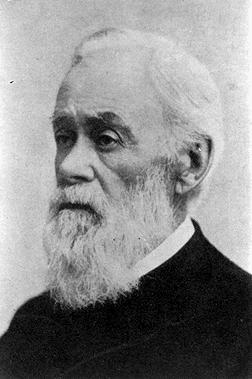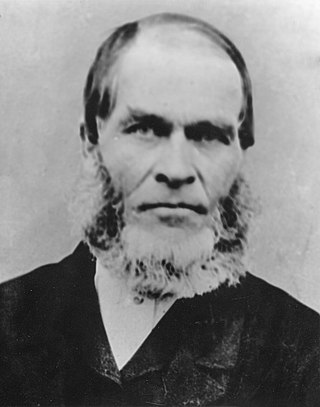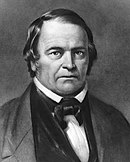
The Seventh-day Adventist Church (SDA) is an Adventist Protestant Christian denomination which is distinguished by its observance of Saturday, the seventh day of the week in the Christian (Gregorian) and the Hebrew calendar, as the Sabbath, its emphasis on the imminent Second Coming (advent) of Jesus Christ, and its annihilationist soteriology. The denomination grew out of the Millerite movement in the United States during the mid-19th century and it was formally established in 1863. Among its co-founders was Ellen G. White, whose extensive writings are still held in high regard by the church.
The Millerites were the followers of the teachings of William Miller, who in 1831 first shared publicly his belief that the Second Advent of Jesus Christ would occur in roughly the year 1843–1844. Coming during the Second Great Awakening, his teachings were spread widely and grew in popularity, which led to the event known as the Great Disappointment.
The Great Disappointment in the Millerite movement was the reaction that followed Baptist preacher William Miller's proclamation that Jesus Christ would return to the Earth by 1844, which he called the Second Advent. His study of the Daniel 8 prophecy during the Second Great Awakening led him to conclude that Daniel's "cleansing of the sanctuary" was cleansing the world from sin when Christ would come, and he and many others prepared. When Jesus did not appear by October 22, 1844, Miller and his followers were disappointed.

The Advent Christian Church, also known as the Advent Christian General Conference (ACGC), is a "first-day" body of Adventist Christians founded on the teachings of William Miller in 1860. The organization's Executive Director is Reverend Steve Lawson, and its President is Reverend John Gallagher.

The Churches of God (Seventh Day) is composed of a number of sabbath-keeping churches, among which the General Conference of the Church of God, or simply CoG7, is the best-known organization. The Churches of God (Seventh Day) observe the Sabbath on Saturday, the seventh day of the week.

James Springer White, also known as Elder White, was a co-founder of the Seventh-day Adventist Church and husband of Ellen G. White. In 1849 he started the first Sabbatarian Adventist periodical entitled The Present Truth, in 1855 he relocated the fledgling center of the movement to Battle Creek, Michigan, and in 1863 played a pivotal role in the formal organization of the denomination. He later played a major role in the development of the Adventist educational structure beginning in 1874 with the formation of Battle Creek College.

The Seventh-day Adventist Church had its roots in the Millerite movement of the 1830s to the 1840s, during the period of the Second Great Awakening, and was officially founded in 1863. Prominent figures in the early church included Hiram Edson, Ellen G. White, her husband James Springer White, Joseph Bates, and J. N. Andrews. Over the ensuing decades the church expanded from its original base in New England to become an international organization. Significant developments such the reviews initiated by evangelicals Donald Barnhouse and Walter Martin, in the 20th century led to its recognition as a Christian denomination.

Rachel (Harris) Oakes Preston was a Seventh Day Baptist who persuaded a group of Adventist Millerites to accept Saturday, instead of Sunday, as Sabbath. This Sabbatarian group organised as the Seventh-day Adventist Church in 1863.

Joshua Vaughan Himes was a Christian leader, publisher, and promoter of intellectual innovators and social reformists. He became involved with the followers of William Miller and later became a prominent leader in the Advent Christian Church (ACC).
The theology of the Seventh-day Adventist Church resembles that of Protestant Christianity, combining elements from Lutheran, Wesleyan-Arminian, and Anabaptist branches of Protestantism. Adventists believe in the infallibility of Scripture and teach that salvation comes from grace through faith in Jesus Christ. The 28 fundamental beliefs constitute the church's official doctrinal position.

The "three angels' messages" is an interpretation of the messages given by three angels in Revelation 14:6–12. The Seventh-day Adventist church teaches that these messages are given to prepare the world for the second coming of Jesus Christ, and sees them as a central part of its own mission.

Hiram Edson (1806–1882) was a pioneer of the Seventh-day Adventist Church, known for introducing the sanctuary doctrine to the church. Hiram Edson was a Millerite adventist, and became a Sabbath-keeping Adventist. Like all Millerites, Edson expected that the Second Coming of Jesus Christ would occur on October 22, 1844. This belief was based on an interpretation of the 2300 day prophecy which predicted that "the sanctuary would be cleansed" which Millerites took to mean that Christ would return on that day.

The seventh-day Sabbath, observed from Friday evening to Saturday evening, is an important part of the beliefs and practices of seventh-day churches. These churches emphasize biblical references such as the ancient Hebrew practice of beginning a day at sundown, and the Genesis creation narrative wherein an "evening and morning" established a day, predating the giving of the Ten Commandments. They hold that the Old and New Testament show no variation in the doctrine of the Sabbath on the seventh day. Saturday, or the seventh day in the weekly cycle, is the only day in all of scripture designated using the term Sabbath. The seventh day of the week is recognized as Sabbath in many languages, calendars, and doctrines, including those of Catholic, Lutheran, and Orthodox churches.
Shut-door theology was a belief held by the Millerite group from 1844 to approximately 1854, some of whom later formed into the Seventh-day Adventist Church. It held that as William Miller had given the final call for salvation, all who did not accept his message were lost. The door of salvation was shut, hence the term "shut door". They later understood it was concerning the sanctuary and not the events on earth so abandoned their earlier understanding. As an interpretation of the year "1844", it was connected to the investigative judgment belief, which forms one of the official 28 Fundamentals beliefs today.
Seventh-day Adventists believe that Ellen G. White, one of the church's co-founders, was a prophetess, understood today as an expression of the New Testament spiritual gift of prophecy.

Sabbatarianism advocates the observation of the Sabbath in Christianity, in keeping with the Ten Commandments.
John T. Walsh was a minister and Millerite who, after the Great Disappointment, led a group of Adventist Millerites. They believed that Christ had returned on October 22 of 1844, only invisibly, and that the Millennium had begun on that date. This group organized as the Life and Advent Union in 1863 which later became part of the Advent Christian Church.

George Washington Morse was a Seventh-day Adventist pioneer. As a Millerite Adventist, he experienced the Great Advent Awakening including the Great Disappointment of October 22, 1844. He joined the Sabbath-keeping Adventists in the late 1840s and remained a member until he died 60 years later. He witnessed the SDA Church's development for over a half of a century.
The Seventh-day Adventist Church pioneers were members of Seventh-day Adventist Church, part of the group of Millerites, who came together after the Great Disappointment across the United States and formed the Seventh-day Adventist Church. In 1860, the pioneers of the fledgling movement settled on the name, Seventh-day Adventist, representative of the church's distinguishing beliefs. Three years later, on May 21, 1863, the General Conference of Seventh-day Adventists was formed and the movement became an official organization.














